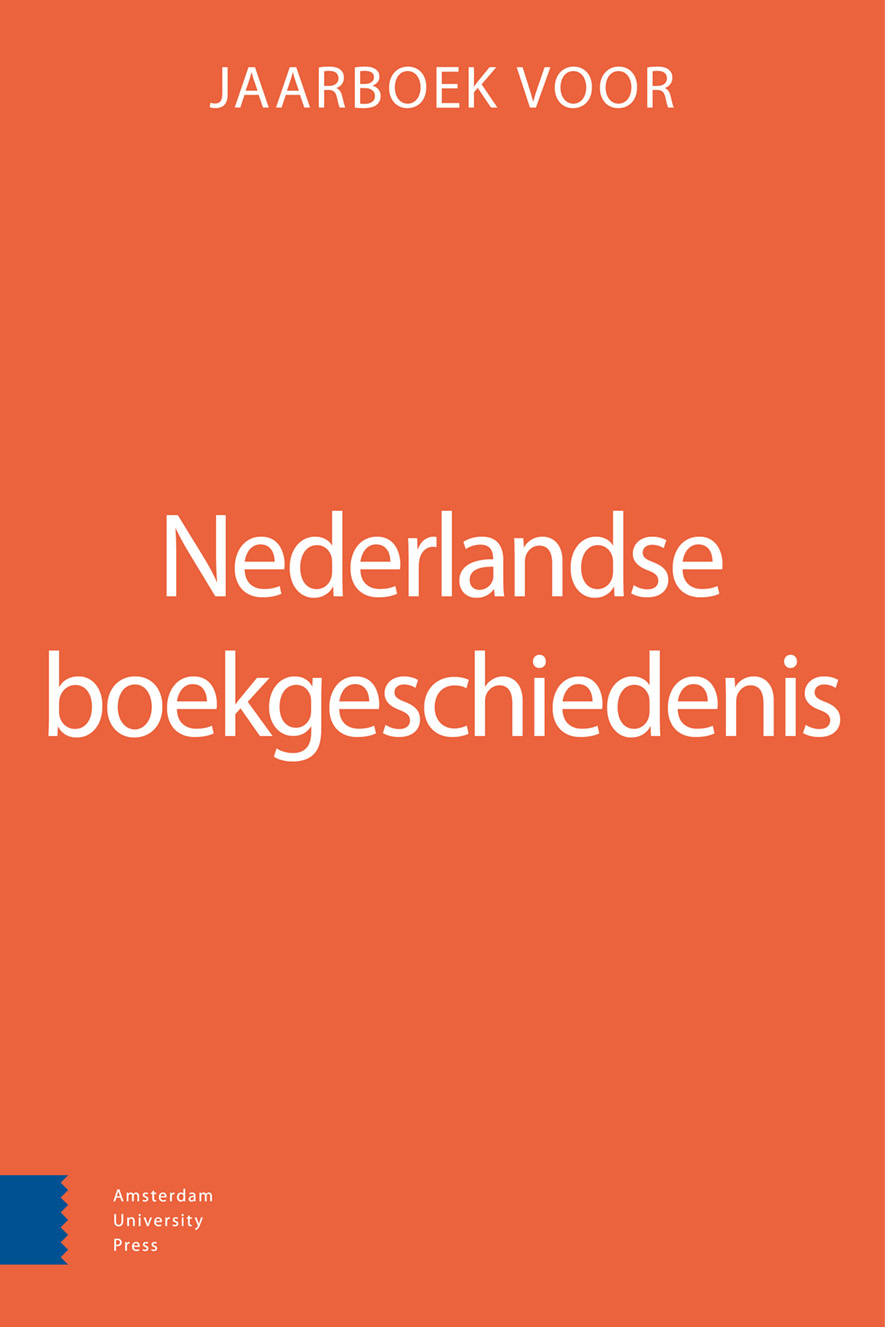- Home
- A-Z Publications
- Jaarboek voor Nederlandse Boekgeschiedenis
- Previous Issues
- Volume 30, Issue 2023, 2023
Jaarboek voor Nederlandse Boekgeschiedenis - Volume 30, Issue 2023, 2023
Volume 30, Issue 2023, 2023
Language:
Dutch
- Redactioneel
-
- Articles
-
-
-
To shape one’s own reading practice
More LessAbstract The psalms were deeply ingrained in late-medieval religious culture and practice. This article investigates how readers of Middle Dutch psalters handled these books and how they included the psalms in their religious practices. It focusses on the material evidence in about fifty copies of the incunable editions of the popular Devotio Moderna psalm translation. Ownership inscriptions, annotations, and ins Read More
-
-
-
-
Boiling it Down
More LessAbstract This article, by analysing the first medical journal published in the Dutch Republic and its discussion of tea, will consider the role of print and the importance of intermedia adaptation and editorial intervention in the early modern circulation of Chinese medical knowledge in Europe. To that end, I will analyse Steven Blankaart’s Collectanea medico-physica (1680-1688) and address three key questions in the historiograph Read More
-
-
-
The handmade blue paper project
More LessAuthors: Leila Sauvage & Grison Marie-NoëlleAbstract This essay explores the materiality of Dutch blue paper (1650-1750), describing the methodology developed at the Moulin du Verger papermill (France). Starting from the visual examination of blue paper objects housed in the Rijksmuseum and the study of written sources, the group of researchers based their experiments at this 16th-century mill, equipped with traditional papermaking stampers, a Hollander cyl Read More
-
- Artikelen
-
-
-
Boeken van plastic
More LessAbstract Unorthodox as it may seem, 3D printing can be applied in book production. This contribution features seven books for which the 3D printer has been used. Three of the featured works have a 3D printed binding; they have been custom made, and hand-bound, by artisanal bookbinders in collaboration with 3D print designers. Another work, published in a regular print run, comes in a 3D printed slipcase. Read More
-
-
- Articles
-
-
-
Books and Prints as Instruments of Early Modern Travel
More LessAbstract In the seventeenth century, the Dutch Republic formed a popular destination on Polish educational tours through Europe. This article examines which travel guides and other printed media in particular steered the gazes and quills of Polish noblemen who journeyed through the Dutch Republic, and how these Poles used such publications to reflect on their own experiences. Analysing several travelogues and Read More
-
-
-
-
A Foreigner in the Bookshop of the World
More LessBy Jacob BaxterAbstract Few foreigners had a better standing in the Dutch Golden Age than the Englishman Sir William Temple (1628-1699). At the beginning of an edition of Temple’s Memoirs, the printer Adriaen Moetjens described him as ‘one of the great men of this century’. This reputation was, in part, a result of the pivotal role that Temple had played in the Republic’s foreign affairs. But the Englishman also owed his fame within the Unite Read More
-
- Artikelen
-
-
-
De Narcisbinderij van meesterboekbinder Roelof Hunia (1722-1803)
More LessAbstract The ten medieval Frisian law manuscripts of Tresoar’s Richthofenkolleksje first came together in the collection of the Frisian notary Petrus Wierdsma (1729-1811). He had five of them rebound in decorated bindings. By way of analysis of the tools used for the decoration, particular technical features and Wierdsma’s use of the manuscripts, four bindings are attributed to the Frisian Prize Bindery and, Read More
-
-
-
-
De collectie vroegmoderne devotieprenten van het Ruusbroecgenootschap: geschiedenis en onderzoeksperspectieven
More LessAuthors: Esther Van Thielen & Daniël ErmensAbstract Seventeenth- and eighteenth-century devotional prints contain much information about early modern spirituality and life in general, as well as art-historical and social-economic information. To enable researchers to access this information, the creation of online databases for large collections is essential. In 2023 the database of one of the most important collections in the Low Countries, the Ruusbroec Institute devo Read More
-
Volumes & issues
Most Read This Month
Article
content/journals/13810065
Journal
10
5
false
en


